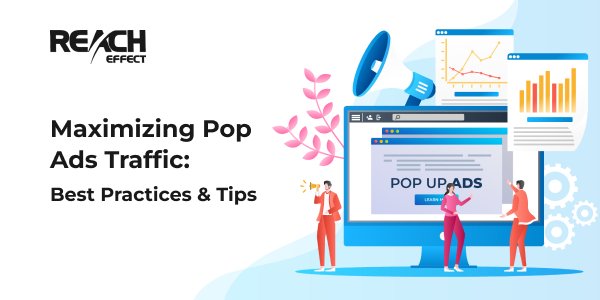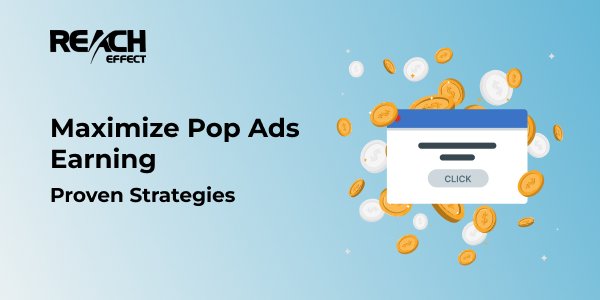
Pop-under ads, which appear behind the main browser window, offer a unique opportunity for engagement. While they’re less intrusive than pop-ups, they can still capture user attention effectively if done right. This article explores strategies for maximizing engagement with pop-under ads to enhance their effectiveness and drive meaningful interactions.

Effective Pop-Under Ads
Understand the Basics of Pop-Under Ads
Pop-under ads are ads that open in a new window behind the user’s current browser window. Unlike pop-ups, which can be immediately disruptive, pop-unders are less intrusive and often go unnoticed until the user closes or minimizes their current window. This format allows for higher visibility without interrupting the user’s browsing experience.
Moreover, pop-unders can be an effective tool for advertisers seeking to reach users without immediate interruption. Understanding their behavior and optimizing their placement can significantly enhance engagement.
Craft a Compelling Ad Message
A compelling ad message is crucial for maximizing engagement with pop-under ads. Since these ads are not immediately visible, it’s essential to create a message that captures attention when the user eventually sees it. Focus on crafting a clear, engaging, and relevant message that highlights the benefits of your product or service.
Additionally, use strong visuals and persuasive copy to make the ad stand out when it does appear. The message should be compelling enough to prompt users to take action, such as visiting your website or making a purchase.
Optimize for Target Audience
Effective targeting is key to ensuring that pop-under ads reach the right audience. Utilize demographic, geographic, and behavioral data to target users who are most likely to be interested in your product or service. This targeted approach increases the likelihood of engagement and conversion.
Moreover, consider user interests and online behavior when designing your ad. Tailoring the content to match the preferences of your target audience enhances relevance and engagement. Effective targeting ensures that your pop-under ads are seen by users who are more likely to respond positively.
Design for Visual Appeal
Visual appeal plays a significant role in capturing user attention with pop-under ads. Since these ads appear behind the main window, they need to be visually striking to stand out when the user eventually sees them. Use high-quality images, bold colors, and clear typography to create an eye-catching design.
Additionally, ensure that the design is consistent with your brand’s visual identity. A visually appealing and cohesive ad reinforces brand recognition and increases the likelihood of user engagement. Good design practices make your pop-under ads more effective and memorable.
Implement a Clear Call to Action
A clear and compelling call to action (CTA) is essential for driving user engagement with pop-under ads. Since the ad is not immediately visible, the CTA should be prominent and persuasive, encouraging users to take the desired action when they eventually view the ad.
Moreover, make the CTA actionable and specific, such as “Shop Now,” “Learn More,” or “Sign Up Today.” A well-defined CTA guides users on what to do next and increases the likelihood of conversion. Ensure that the CTA is easy to find and understand, even if the ad is viewed later.
Test and Optimize Ad Placement
Testing different placements for your pop-under ads is crucial for optimizing engagement. Experiment with various websites, pages, and times to determine where your ads perform best. Monitor performance metrics such as click-through rates, conversion rates, and engagement levels to identify the most effective placements.
Additionally, refine your placement strategy based on data-driven insights. Continuous testing and optimization help ensure that your pop-under ads are shown in environments where they are more likely to capture user attention and drive engagement.
Avoid Overuse and Intrusiveness
While pop-under ads can be effective, overusing them or making them too intrusive can negatively impact user experience. Avoid bombarding users with excessive pop-unders, as this can lead to annoyance and decreased engagement.
Moreover, ensure that your ads comply with industry guidelines and best practices to avoid being perceived as spammy or intrusive. Balancing the frequency and placement of pop-under ads helps maintain a positive user experience while maximizing engagement.
Monitor and Analyze Performance
Monitoring and analyzing the performance of your pop-under ads is essential for optimizing engagement. Use analytics tools to track key metrics such as impressions, clicks, conversions, and user interactions.
Additionally, gather feedback and insights to understand how users respond to your ads. Analyzing performance data helps identify successful strategies and areas for improvement. Regular monitoring and analysis enable you to refine your approach and enhance the effectiveness of your pop-under ads.
Conclusion
Maximizing engagement with effective pop-under ads involves crafting a compelling message, optimizing targeting, and designing visually appealing ads. Implementing a clear call to action, testing and optimizing ad placement, and avoiding overuse are also crucial for success. By monitoring and analyzing performance, you can continuously refine your strategies to drive meaningful interactions and achieve your advertising goals.
